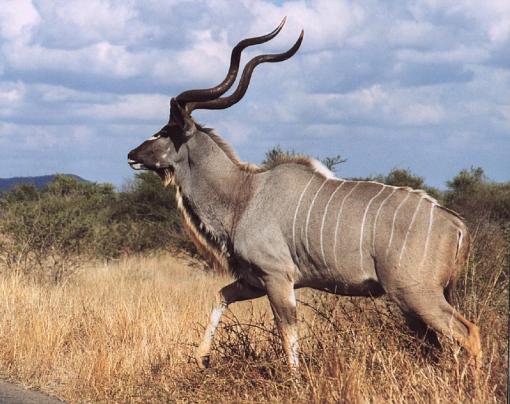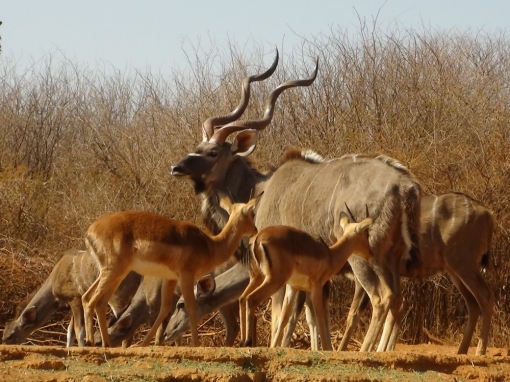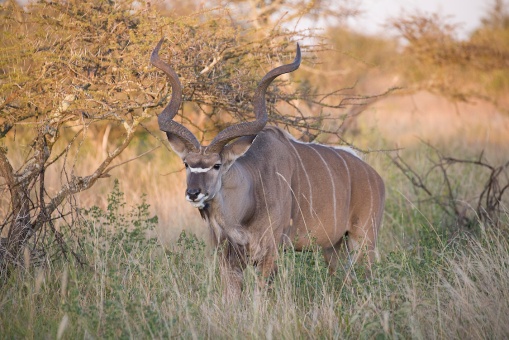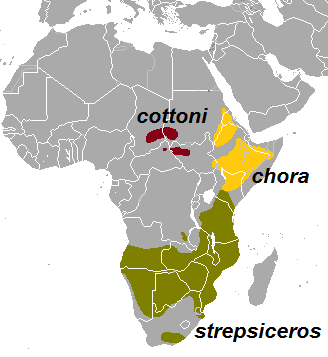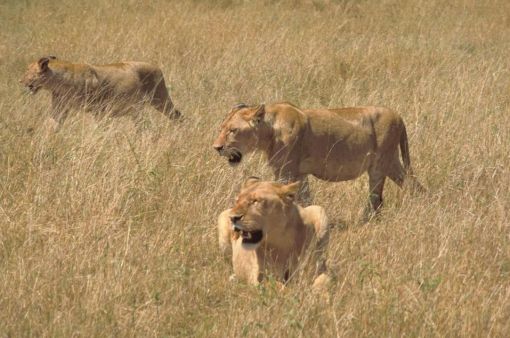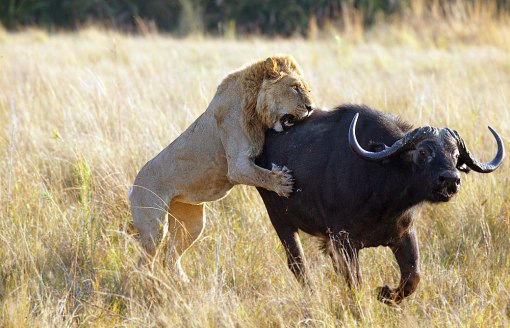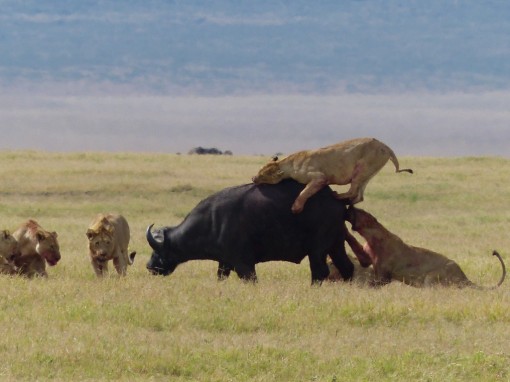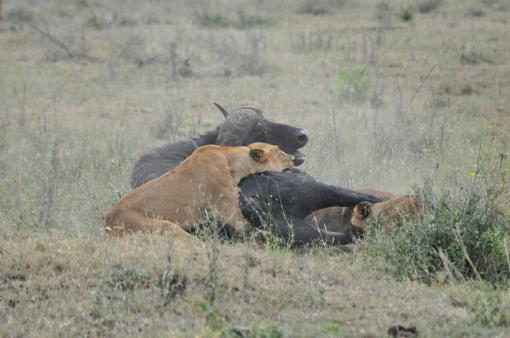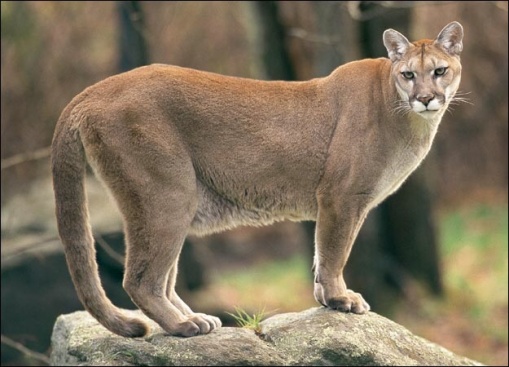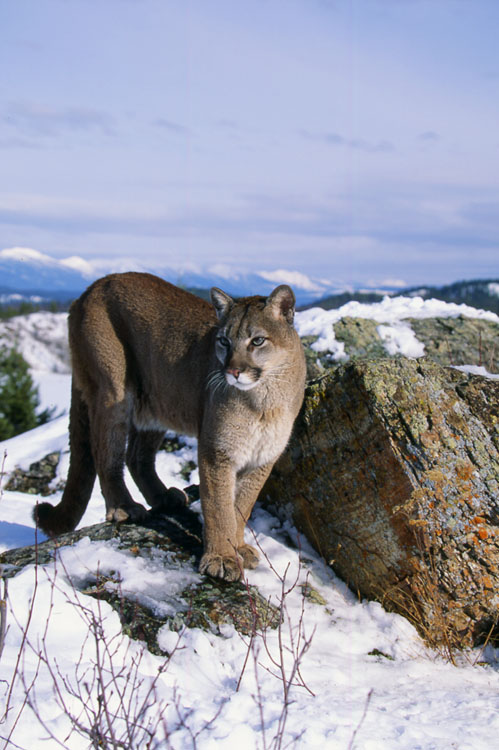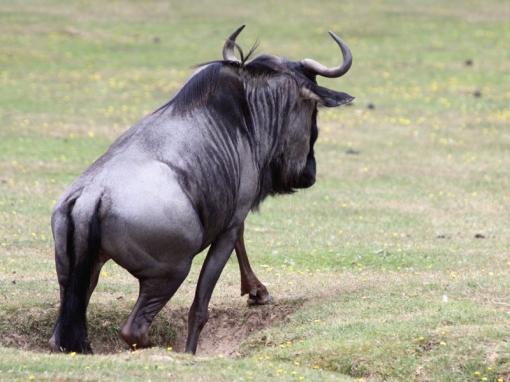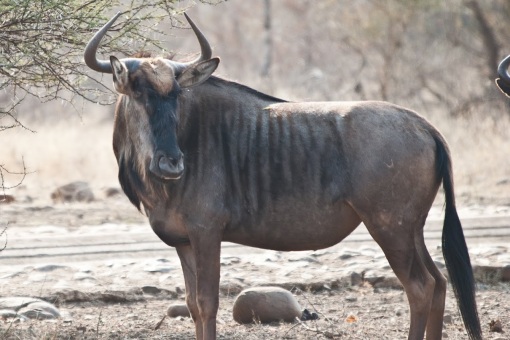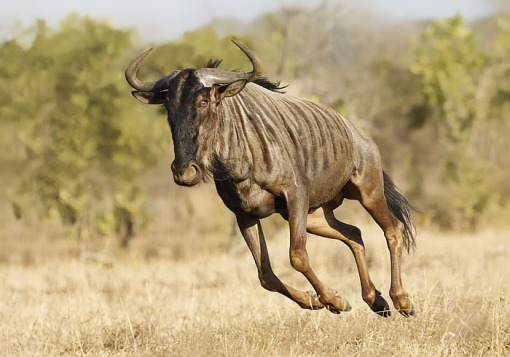The greater kudu (Tragelaphus strepsiceros) is a woodland antelope found throughout eastern and southern Africa. Despite occupying such widespread territory, they are sparsely populated in most areas, due to a declining habitat, deforestation and poaching. The greater kudu is one of two species commonly known as kudu, the other being the lesser kudu, Tragelaphus imberbis.
***
Range of the subspecies of the greater kudu
The kudu is a sub-species of antelope that is found inhabiting mixed shrub woodland, and savanna plains in eastern and southern Africa. The kudu relies heavily on close, dense thickets in which the kudu can escape to and hide when it feels threatened.
Subspecies
There are three subspecies of Greater Kudu: Southern Greater Kudu (Tragelaphus strepsiceros strepsiceros), East African Greater Kudu (Tragelaphus strepsiceros bea) and Western Greater Kudu (Tragelaphus strepsiceros cottoni) as identified in this post. These kudu species are closely related and look very similar in appearance but there are a few distinctive ways that the lesser kudu and the greater kudu can be distinguished from one another. The lesser kudu has ten white stripes which run vertically down the lesser kudu’s body where the greater kudu can have anyway between 4 and 12 stripes. The greater kudu is also generally bigger than the lesser kudu.
Diet
Kudus are herbivorous animals and therefore have a completely vegetarian diet. Kudus forage in woodland and around thickets of shrubs nibbling on leaves from the trees and bushes. Kudus also eat other varieties of plant life such as herbs, flowers, berries and fallen fruits.
Predators
Kudus are prey to a number of predators such as lions, leopards, cheetahs, Hun=mans, wild dogs and the occasional large python that will hunt the smaller and more vulnerable kudu young. Kudu are able to run very fast but often have a hard time outrunning predators so the kudu rely on their agile ability to leap into forest and woodland where large carnivorous predators find it harder to chase them. The kudu will then often hide in woodland until the predator have eventually given up and left.
Habitat
Greater Kudu are found in the brush covered plains, woodlands and rocky hillsides of eastern and southern Africa. Kudus live in small herds of up to 24 kudu individuals. The kudu herds mainly consist of female kudus and their calves as male kudus tend to solitary and only come together with other kudus when it is time to mate. It has been known that groups of up to 8 male kudus will form a herd but this is very rare.
Breeding
The kudu mating season occurs at the end of the rainy season. The kudu gestation period is around 8 months after which time the female kudu will normally give birth to just one baby kudu. The baby kudus tend to be born around February and March when the grass is at it’s highest and there is plenty of food to help the baby kudu calves to grow.
Kudus have both benefited and suffered from contact with humans. Humans find the kudu and easy target for hunting due to the fact that kudus tend to stop and look around after they have run away. Some local tribes people believe the kudu to be a sacred animal and therefore protect the kudu rather than killing it. Human settlements have also meant that the kudu habitat as changed and the kudu have had to move to other areas. This has actually done the kudu population the world of good as the kudu have been pushed into areas where there is a better source of water and therefore food.
Interesting Facts
Greater Kudu are the second largest Antelope in the world, the eland being the largest.
Greater Kudu and Lesser Kudu Range Map (Africa)
***









